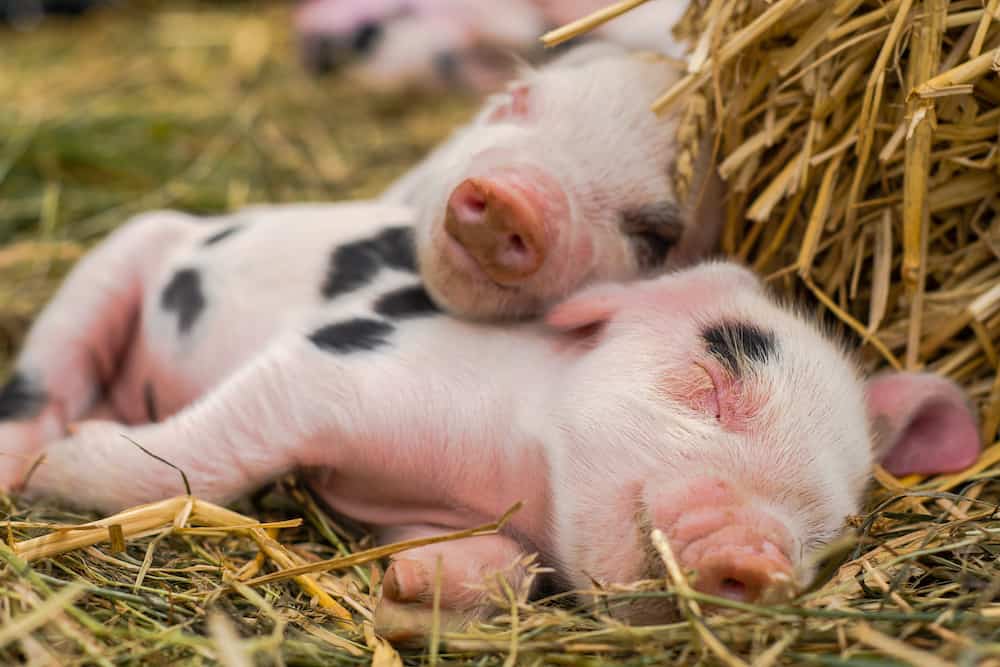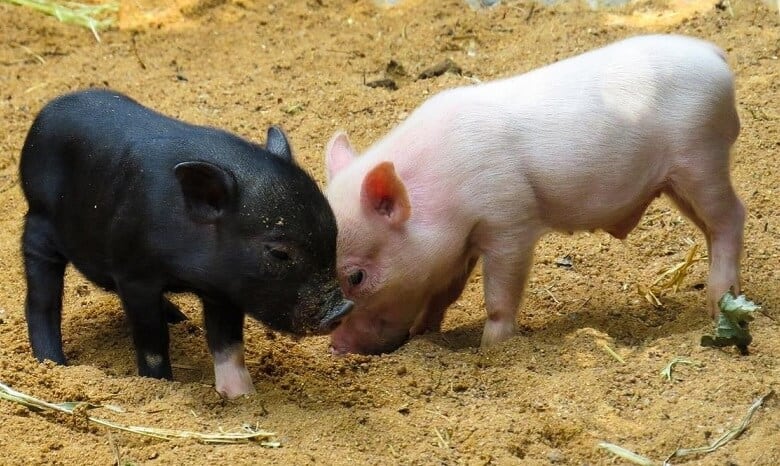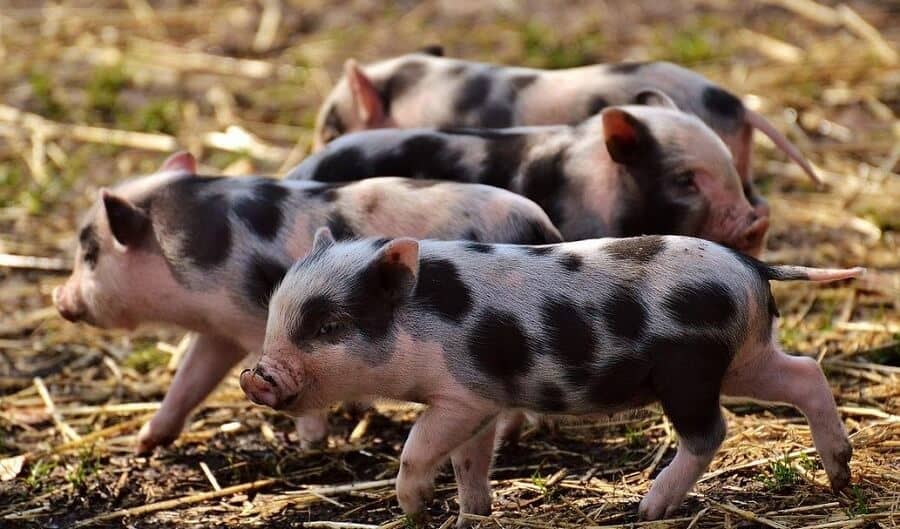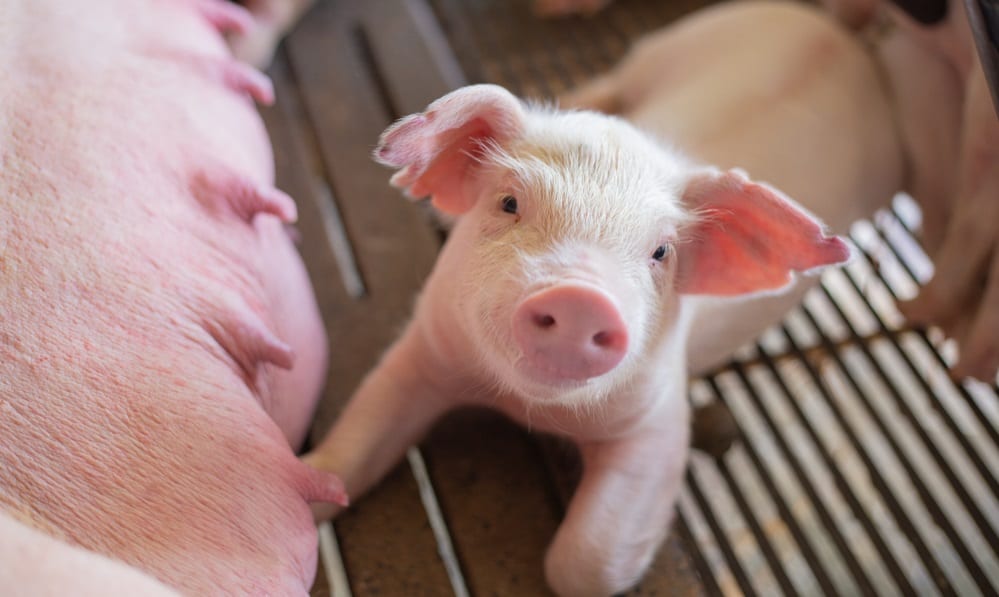Genetics plays an important role in a pig’s meat quality and overall performance. That’s one of the main reasons commercial and private pig farmers pay close attention to their breeding stock. As a pig producer, learning how to breed pigs is a skill that will go a long way towards improving the caliber of animals on your farm.
While breeding pigs is relatively easy, the trick is in the specifics. The kind of boar you pair with the gilt or sow matters greatly. Whether you are looking to breed pigs on your farm for profit or just learning how to breed them for sheer knowledge and fun, here’s some information that will help.
What Is Pig Breeding?
To understand pig breeding, we must first understand the definition of a breed. A breed is a group of animals with a common ancestry and several distinguishable traits and characteristics.
When a male animal of specific breed mates with a female animal of the same breed, these traits and characteristics are frequently fixed and present in the offspring.

For example, if a boar (male pig) of the Chester White breed mates with a gilt or sow (female pig) of the same breed (Chester White), they can expect the piglets to have at least the following characteristics:
- Be all white at the hair level
- I have pinkish skin that can easily get sunburnt
- It will grow to be a large white pig with good quality meat
That’s because these are the most common characteristics of the Chester White Pig breed, and since both the boar and the breeding gilt are both Chester White pigs, you can expect the piglets to be pure-bred, portraying Chester White characteristics.
What Is a Pig Mating System?
A pig breeding or mating system is the approach a farmer would take when pairing certain individuals to maintain or incorporate specific desired traits. When it comes to pig mating systems, there are two main types:
- Positive assortative mating: This is where the farmer would breed the same breed of boar with the same breed of gilt (like for like). This is done to maintain and narrow the genetic pool down. Doing that ensures that the desired traits are more pronounced or appear more frequently in the offspring.
- Negative assortative mating: This mating system is the exact opposite of positive assortative mating. In negative assortative mating, the mating is from a different breed (unlike to unlike). This is done to eliminate certain characteristics or correct a specific genetic trait in the offspring.
These two mating strategies give rise to five different breeding systems:
- Inbreeding: This is where closely related individuals are bred
- Linebreeding: This is also a form of inbreeding, but the plan here is to try and concentrate the inheritance of a specific line of ancestors within the same herd
- Outcrossing: This is where you breed individuals not closely related within the herd
- Random mating: This is where the pigs are given free rein, and any individual can mate without their pedigree coming into question
- Crossbreeding: This is the deliberate and planned mating of individuals from specific different breeds. The idea here is to achieve what is known as heterosis, which is the improved reproductive performance of the offspring when compared to the average of the parents
Even though strategies such as inbreeding and linebreeding tend to encourage a bit of uniformity and the farmer can often expect a certain level of performance from their herd, it also increases the potential for undesirable genes.
This, in turn, can lead to a gradual but steady decline in the resulting breed’s performance. This is known as inbreeding depression. As a remedy for this, crossbreeding is often encouraged.

How to Breed Pigs
Now that we know about the strategies, let’s take a quick look at the different ways of breeding pigs, depending on your farm setup.
Pen Mating
Pen mating is simple. All you have to do is let your boar run wild with the sows in a pen. This method works best if you have a big pig farm with a spacious pen. There are, however, some problems with this approach.
For one thing, you will have to only allow the specific type of sow you want to crossbreed with your boar in the pen. Otherwise, the boar will mate with any sow from any swine breed as long as it’s on heat and within reach.
Hand Mating
This method of breeding involves a great deal of supervision on your part. The idea here is to allow the boar to mate with only one sow. As such, you should only introduce the sow to the boar once every 24 hours for the first three days during her estrus cycle. That means you would have to closely monitor her estrus cycle.
The other option is to simply introduce your sow to the boar every day of her estrus cycle until she refuses to be mounted by him. This would typically indicate that she has been successfully bred.
Artificial Insemination
AI, or artificial insemination, doesn’t always need a boar to be present. Most farmers who choose to go for artificial insemination often buy frozen semen of the pig breed they want to cross with their sow.
In this case, the frozen semen is artificially introduced to the sow or gilt. Artificial insemination involves a great deal of work on your part:
- Locating and buying the semen from the desired breed of pig
- Assembling all the necessary apparatus to artificially inseminate the sow
- Keep close track of your sow’s estrus cycle
- Keep close track of her temperature throughout the day
- Inseminating her artificially at 12 – 16-hour intervals
How to Tell If Your Pig Is Pregnant
The idea behind breeding pigs is to get the sow pregnant with the specific breed you want and have her give birth to a litter of piglets bearing those particular genetic traits. It’s therefore important to know how to look for signs that all this effort was fruitful. Here are some tips on telling if your pig is pregnant.
She doesn’t come into estrus
This is one of the clearest signs that your sow was successfully bred in the last breeding cycle. She might be pregnant if she doesn’t enter estrus in 21 days.
However, there are many different reasons why different pig breeds might not come into heat even when they aren’t pregnant. These may include things like stress, diet, living conditions, and so on. This, therefore, shouldn’t be your only indicator.
She’s not interested in being mounted
This is another sign that your pig may be pregnant. If she’s not interested in the advances of the boar, then she might be in the family way. However, some sows will tolerate boar advances even if they are pregnant, depending on their temperament and how aggressive the boar in question is toward the sows.
Ultimately, the best way to confirm if your sows are pregnant is to have a vet do it for you. In many cases, a swine ultrasound will do the trick.

How Many Piglets Can a Sow Have?
Depending on the pig breed and the reproduction performance of the breeds in question, a sow can have a large litter size of about 8–12 piglets. The saddest part is that most of these babies will probably not reach adulthood, as piglets generally have a mortality rate of around 40%.
This, however, is a matter of management. Done properly, you could raise all your piglets to young pigs and then large adults.
Learn how long are pigs pregnant to get better informed on the overall gestation period of hogs and how to take care of the potential mother pigs in your herd.
Raising pigs, regardless of the breed, be it the American Yorkshire pig, American Guinea hog, Berkshire pigs, or any kind of heritage breed, can be technically challenging. This is particularly true if you are looking to crossbreed them with other native breeds for pork.
However, with the right information and professional help from a breeder or a vet, it should be a fun experience. This guide is a good place to start. Learn about raising various pig breeds on your farm or homestead.

